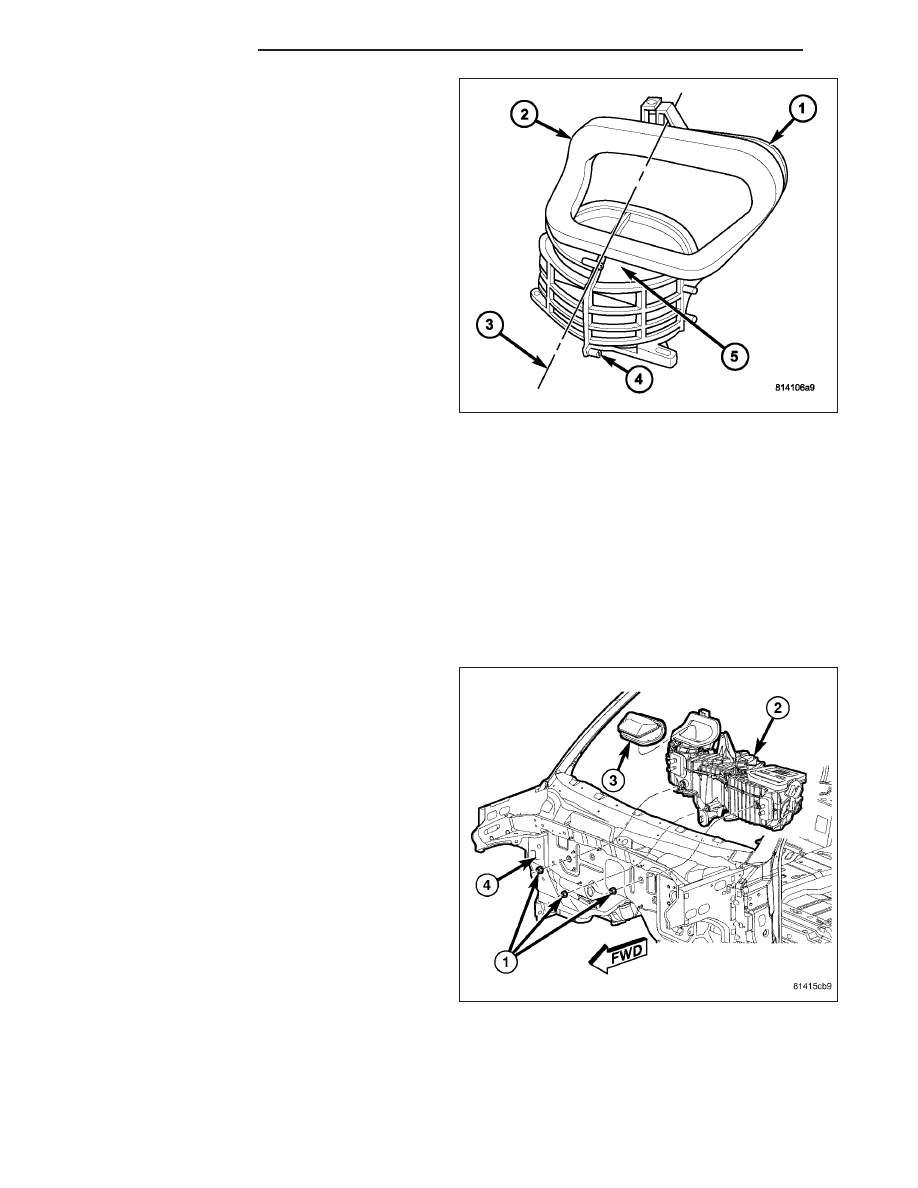Content .. 1291 1292 1293 1294 ..
Dodge Dakota (ND). Manual - part 1293

1. Position the recirculation-air door (5) into the air
inlet housing (1).
CAUTION: Make sure that the recirculation-air
door pivot shaft is properly seated in the pivot
holes located in the two halves of the air inlet
housing.
NOTE: If the seal on the air door is deformed or
damaged, the air door must be replaced.
2. Install the four screws (4) that secure the two
halves of the air inlet housing together. Tighten the
screws to 2 N·m (17 in. lbs.).
3. Install the blower motor resistor onto the air inlet
housing (Refer to 24 - HEATING & AIR CONDI-
TIONING/CONTROLS/RESISTOR-BLOWER
MOTOR - INSTALLATION).
4. Install the recirculation door actuator onto the air inlet housing (Refer to 24 - HEATING & AIR CONDITIONING/
CONTROLS/ACTUATOR-RECIRCULATION DOOR - INSTALLATION).
5. Install the air inlet housing onto the HVAC housing (Refer to 24 - HEATING & AIR CONDITIONING/DISTRIBU-
TION/HOUSING-HVAC - HOUSING-AIR INLET - INSTALLATION).
INSTALLATION
HVAC HOUSING
NOTE: The HVAC housing must be removed from the vehicle and disassembled for service of the heater
core, A/C evaporator, mode-air and blend-air doors.
1. If removed, install the fresh air screen (3) onto the
dash panel (4).
2. Position the HVAC housing (2) into the passenger
compartment with the mounting studs and the con-
densate drain tube in their proper locations in the
dash panel.
3. Loosely install the three nuts (1) that secure the
HVAC housing to the engine compartment side of
the dash panel.
24 - 170
DISTRIBUTION
ND